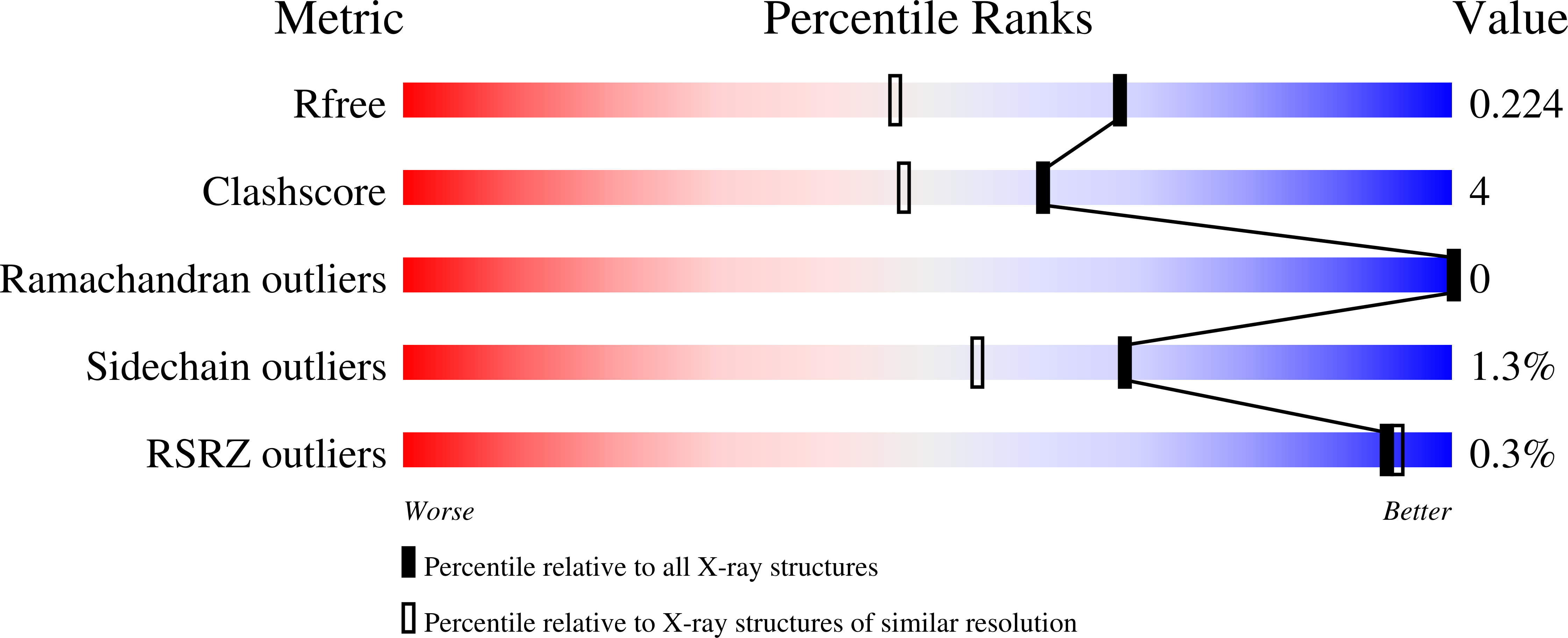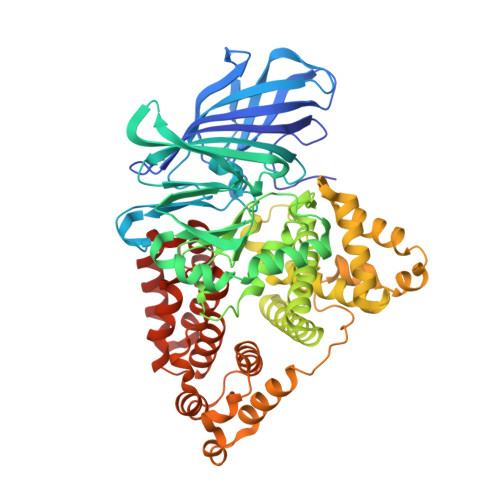Binding of Pro-Gly-Pro at the active site of leukotriene A4 hydrolase/aminopeptidase and development of an epoxide hydrolase selective inhibitor.
Stsiapanava, A., Olsson, U., Wan, M., Kleinschmidt, T., Rutishauser, D., Zubarev, R.A., Samuelsson, B., Rinaldo-Matthis, A., Haeggstrom, J.Z.(2014) Proc Natl Acad Sci U S A 111: 4227-4232
- PubMed: 24591641
- DOI: https://doi.org/10.1073/pnas.1402136111
- Primary Citation of Related Structures:
4L2L, 4MKT, 4MS6 - PubMed Abstract:
Leukotriene (LT) A4 hydrolase/aminopeptidase (LTA4H) is a bifunctional zinc metalloenzyme that catalyzes the committed step in the formation of the proinflammatory mediator LTB4. Recently, the chemotactic tripeptide Pro-Gly-Pro was identified as an endogenous aminopeptidase substrate for LTA4 hydrolase. Here, we determined the crystal structure of LTA4 hydrolase in complex with a Pro-Gly-Pro analog at 1.72 Å. From the structure, which includes the catalytic water, and mass spectrometric analysis of enzymatic hydrolysis products of Pro-Gly-Pro, it could be inferred that LTA4 hydrolase cleaves at the N terminus of the palindromic tripeptide. Furthermore, we designed a small molecule, 4-(4-benzylphenyl)thiazol-2-amine, denoted ARM1, that inhibits LTB4 synthesis in human neutrophils (IC50 of ∼0.5 μM) and conversion of LTA4 into LTB4 by purified LTA4H with a Ki of 2.3 μM. In contrast, 50- to 100-fold higher concentrations of ARM1 did not significantly affect hydrolysis of Pro-Gly-Pro. A 1.62-Å crystal structure of LTA4 hydrolase in a dual complex with ARM1 and the Pro-Gly-Pro analog revealed that ARM1 binds in the hydrophobic pocket that accommodates the ω-end of LTA4, distant from the aminopeptidase active site, thus providing a molecular basis for its inhibitory profile. Hence, ARM1 selectively blocks conversion of LTA4 into LTB4, although sparing the enzyme's anti-inflammatory aminopeptidase activity (i.e., degradation and inactivation of Pro-Gly-Pro). ARM1 represents a new class of LTA4 hydrolase inhibitor that holds promise for improved anti-inflammatory properties.
Organizational Affiliation:
Divisions of Physiological Chemistry II and Physiological Chemistry I, Department of Medical Biochemistry and Biophysics, Karolinska Institutet, S-171 77 Stockholm, Sweden.


















